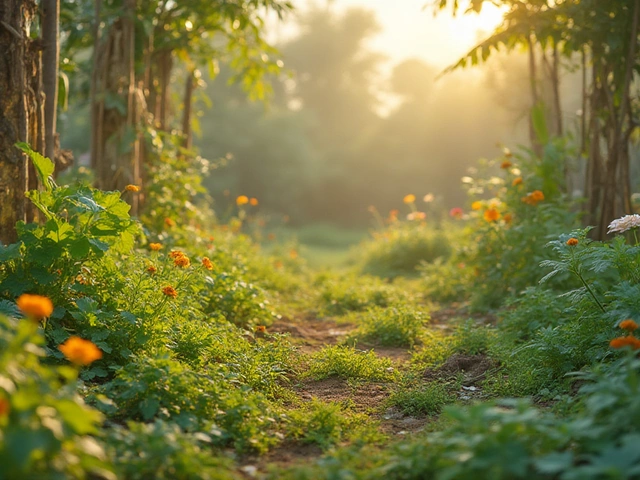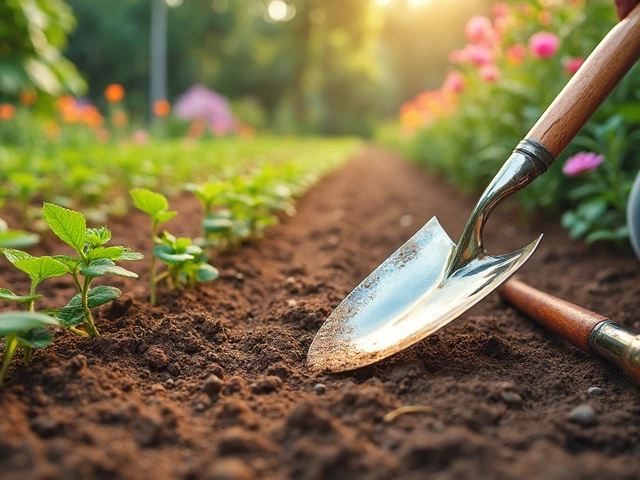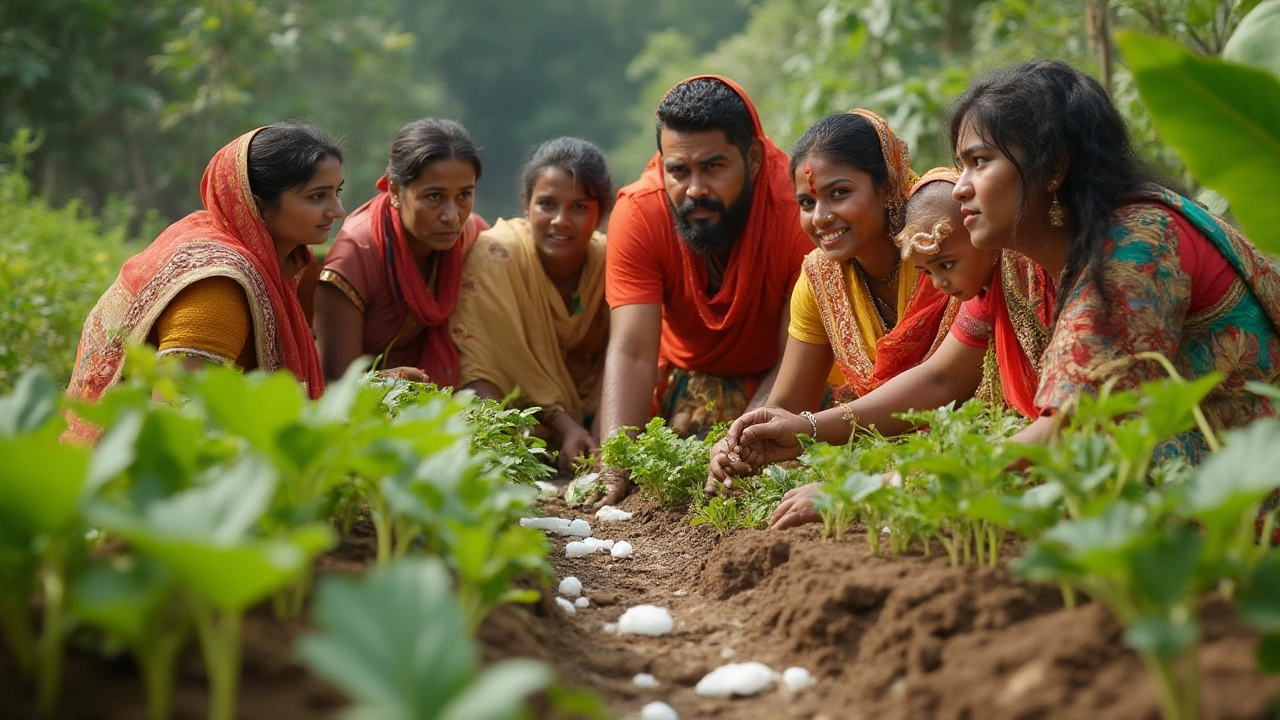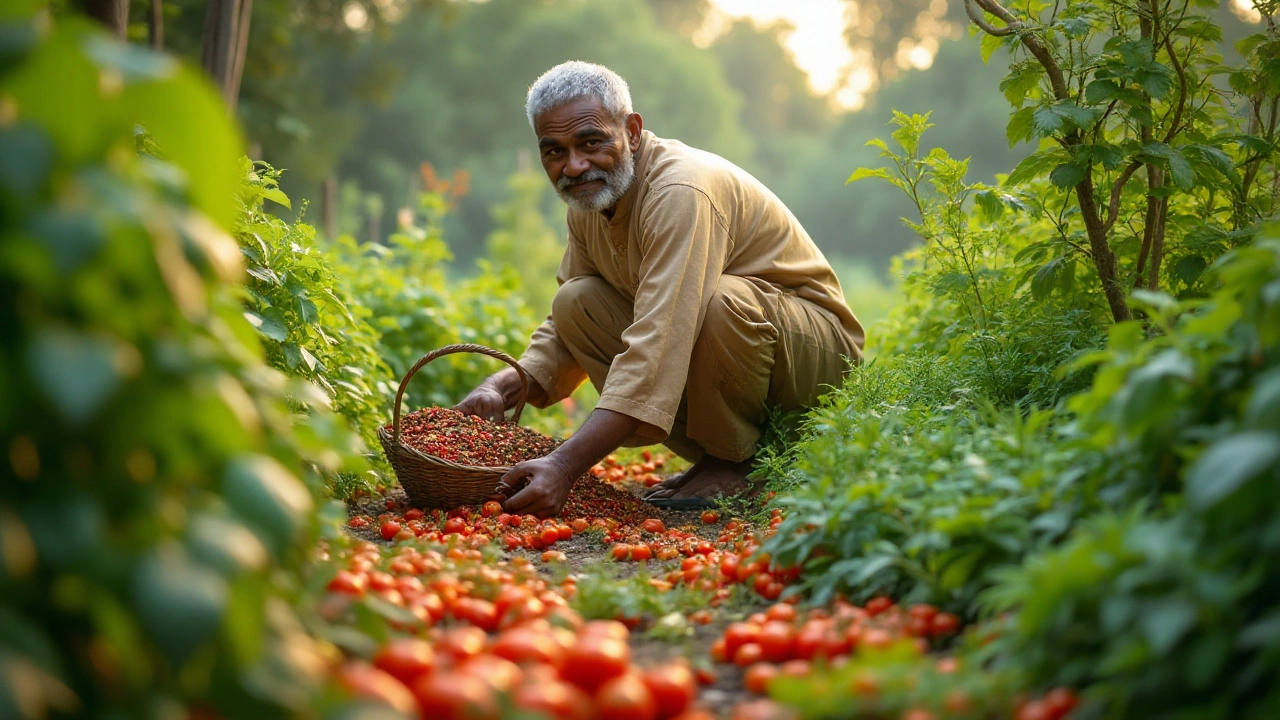Vegetable Gardens: Your Guide to Fresh, Home‑Grown Produce
Want tasty veggies right from your backyard or balcony? A vegetable garden doesn’t need a huge plot or fancy tools. With the right soil, water plan, and crop choices, you can grow food that tastes better than anything from the market.
Pick the Right Spot and Soil
First, find a sunny spot that gets at least 5‑6 hours of light daily. Sunlight is the biggest energy booster for veggies. If you’re on a balcony, a west‑facing railing works well.
Soil quality decides how fast plants grow. In most Indian regions, a mix of garden loam, compost, and a little sand gives good drainage and nutrients. Add well‑rotted cow dung or kitchen compost to boost organic matter. For heavy clay, sprinkle sand and extra compost to loosen it – this stops roots from choking.
Water Smart: Drip Irrigation and Timing
Water waste is a common problem, but drip irrigation solves it. Lay drip lines a few centimeters under the soil surface; they deliver water right to the root zone and keep leaves dry, reducing disease. If you can’t install a full system, a simple soaker hose works too.
Water early in the morning or late evening. This reduces evaporation and gives plants time to absorb moisture before the heat hits. Check the soil with your finger – if the top 2‑3 cm feels dry, it’s time to water.
For small gardens, a bucket of water per square meter twice a week often suffices, but hot summer months may need extra watering.
Now, let’s talk crops. Choose varieties that match your climate. In North India, grow cauliflower, cabbage, and carrots in winter. In South India’s warm months, try okra, beans, and bitter gourd. Broccoli is becoming popular, and our recent guide on "Broccoli Farming in India" shows you can earn profit if you pick the right seed and manage spacing.
Companion planting is a simple way to boost yields. Plant basil next to tomatoes to repel pests, or grow marigold around your plot to deter nematodes. This trick, called sister plants, improves soil health and reduces the need for chemicals.
Mulching helps keep the soil moist and suppresses weeds. Spread a layer of dry leaves, straw, or coconut husk around your plants. It also adds organic matter as it breaks down.
When it comes to fertilizing, stick to natural options. A cup of compost tea every two weeks feeds veggies with micronutrients. If you notice yellow leaves, a dash of iron chelate can fix the problem quickly.
Finally, keep an eye on pests. Instead of reaching for chemicals, try neem oil spray or homemade garlic‑pepper mix. These natural solutions protect your garden without harming beneficial insects.
By following these simple steps – sunny spot, good soil, smart watering, right crops, companion planting, and natural pest control – you’ll see a steady flow of fresh veggies. Your vegetable garden will not only feed your family but also give you a satisfying hobby that connects you to nature.
Is Styrofoam Safe for Vegetable Gardens? The Truth About Using Polystyrene in Gardening
Dig into the safety and effects of using Styrofoam in vegetable gardens. Learn if polystyrene is safe, what experts say, and get practical tips from real gardeners.
Top Soil Enhancers for Thriving Vegetable Gardens
As gardeners strive to cultivate lush and productive vegetable gardens, understanding the best soil enhancers becomes essential. By knowing what enriches the soil, gardeners can ensure robust plant growth and healthier crops. This article explores various natural and organic soil enhancers, dives into their benefits, and offers practical tips for use. Whether you're a seasoned gardener or a curious newbie, this guide will help you transform your garden soil into a fertile haven.
About
Gardening, Soil Improvement
Latest Posts


Alternative Pest Control: Natural Solutions for Safe Gardening
By Alden Thorne Jul 15, 2025

Most Beautiful Flower in the World: What Truly Stands Out?
By Alden Thorne May 29, 2025

The First Essential Tool Every Gardener Needs
By Alden Thorne Apr 16, 2025


